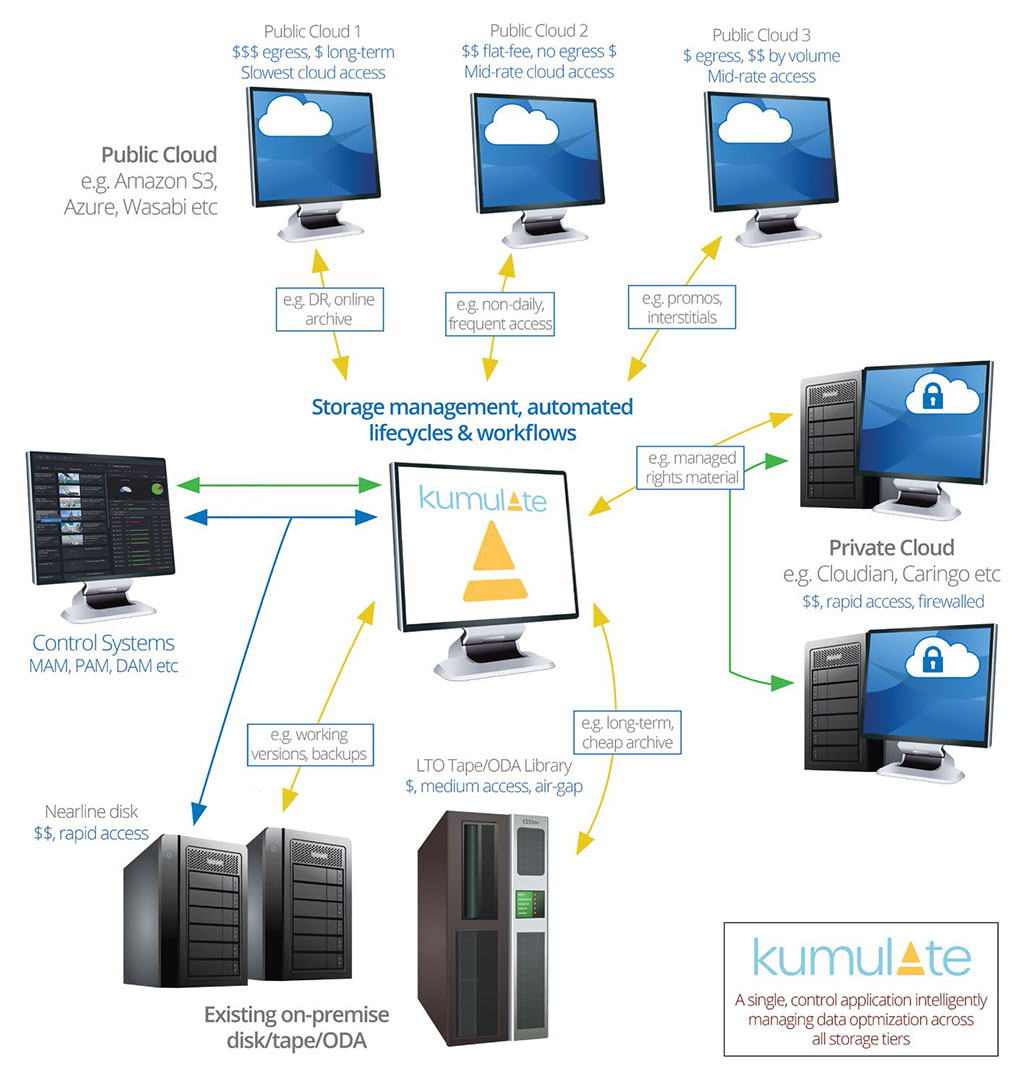Using the Cloud to Unlock The Value of Your Assets
WASHINGTON—As we begin a new decade, the media archive landscape is going through significant changes. While the traditional requirement to preserve content has always existed, new ways to deliver content offer greater potential for monetization now than at any time in the past. New technologies and vendors have also arrived, promising new capabilities and lower costs. And of course, file sizes and shooting ratios continue to increase.

It is clear that the cloud will play a major role in the future of media archiving. Private cloud solutions, where the organization’s infrastructure is shared among multiple groups, departments, stations or regions, are used heavily today. Public cloud solutions, from providers such as Amazon, Microsoft, Google, and others, have compelling services that offer low up-front costs but a continuous operational expense that usually increases over time. Hybrid solutions that incorporate both public and private cloud, may enable customers to utilize the strengths of both private and public clouds.
It is important to note that there are a wide variety of companies offering cloud-based infrastructure, with each one providing unique products and services. Some may offer cloud-based processing, cloud storage, content processing, and machine learning services, while others may focus on fewer services. In addition, their storage tiers and pricing structures may vary widely. Differences in storage and egress costs, retrieval responsiveness, as well as the number and locations of their data centers are all factors that may be considered as part of the decision to select one vendor over another.
THE (GRADUAL) RISE OF CLOUD STORAGE
Public cloud technology has now reached the point where almost every media organization is using it in some form as part of their daily operations. While the majority of media archives are kept on-premise today, some organizations have begun to rely on public cloud storage as part of their archive solution. This can take several forms, such as:
Primary archive storage: Archived media files are stored on public cloud storage. When content is required by the organization’s users or systems, it is restored from the public cloud.
Business continuity: Similar to primary archive storage, archived media files are stored on public cloud storage. However, in this case copies of the media files are also stored on-premise and the public cloud copies are retained as a backup in case the primary storage or location is not accessible or usable.
The professional video industry's #1 source for news, trends and product and tech information. Sign up below.
Collaboration: Selected archived media files are stored on public cloud storage, so that they can be accessed by remote users, external contributors, or business systems.
In addition to cloud storage, some organizations are using the public cloud to host the asset or archive management application, reducing or eliminating the need to deploy servers in their data center(s). In addition to the elimination of CAPEX (capital expenditures) costs, this can also give them the ability to scale their computing resources up and down as needed in a way that would be cost-prohibitive on premise.
THE ROLE OF AI AND MACHINE LEARNING
Almost every organization has a significant amount of content that has little or no metadata. Artificial intelligence and machine learning systems offer an automated way to extract metadata from files, through services such as speech-to-text, facial recognition, object recognition, and sentiment analysis.
The accuracy of these services varies, but with companies like Amazon, Apple, Facebook, Google and Microsoft investing heavily in these technologies, it is likely that we will see major strides in their effectiveness in this decade. Consumer adoption of products using speech recognition and visual recognition is a clear indicator of the appetite for these technologies. In early 2019, Amazon informally announced that 100 million Alexa-powered devices had been sold globally, and NPR/Edison estimates that there are almost 120 million smart speakers in the United States alone. The use of devices like these, along with visual recognition tools used by OTT and social media applications, will continue to expand the size of the “data lakes” that help to refine these technologies.
Automated metadata extraction will enhance the value of media archives. By enriching archived assets with metadata, it is now possible to begin to understand what value they may have. The assets can now be exposed to both internal and external users who may be interested in using them. This will lead to the development of new tools and channels to enable consumers, companies and other organizations to search, browse, and purchase content directly from the owner/creator.
MANAGING ASSETS, NOT JUST ARCHIVING FILES
To maximize the potential of the modern media archive, asset and archive management systems need to do more than just control storage systems. They need to understand file formats, metadata and workflows, so that they can get content to the right place, at the right time, in the right format. Business rules can be used to determine the right format, wrapper and bitrate to be used for the archived asset and for any copies that may be created as it is moved through the facility. By storing metadata and the asset together in formats that can be read by other vendors, these systems can also make sure that the content is portable and future-proofed.
Asset and archive management systems are critical to the integration of public cloud storage, not only because they provide the interfaces between that storage and the customer’s production and/ or distribution systems, but also because they can manage hybrid storage environments. These environments may have a mix of on premise and cloud storage, or even multiple cloud services, and moving or migrating content between the different systems must be automated and seamless. The management systems should also provide tools that predict future costs as the cloud storage usage increases.
Solutions such as Masstech’s Kumulate can provide the tools to easily manage these processes and to ensure that your organization is ready for the next decade and beyond.
Savva Mueller is vice president, product management and marketing for Masstech.
